|
Addition is not easy for all students. Even the basic facts are difficult for some kids to remember. It is important that we teach several strategies so that children can find ones that will work for them. Today, I am going to focus on making ten. This is a very useful strategy to teach, because it can be used when more difficult addition questions need to be solved. I am a firm believer in starting with concrete, hands on activities so that kids can see and practice the concepts being presented before being handed worksheets or other abstract materials. Here are a couple of my favorite activities. Making tens with dice Using dice to make ten is a great way to see the numbers and make connections with them. In this first activity, I use the dice from a game. There are 5 dice with the numbers 1,2,3,4, and 2 Ws. There are 5 dice with the numbers 5,6,7,8,9,and 10 on them. The goal is to find 2 dice that go together to make 10. I usually do this with pairs. Each person gets 3 rolls. On the third roll, a W may be used as a wild card to make 10. It can be fun to see who gets more 10s on their turn. In order to allow several groups of children to play at once, I bought some wooden cubes from the dollar store and I labelled them to match the dice from the game. It is amazing how quickly kids move from having to count fingers to figure out which numbers go together to be able to automatically see the corresponding numbers. When they get really good at making tens with the six sided dice, I give them 10 sided dice. The object is the same, but this time there are no wild cards. They get really excited about having the fancy dice to work with. Making tens with ten frames Ten frames are another great tool for helping kids make ten. They are set up with two groups of five so that kids can start to see combinations to make ten quickly. Ten frame cards are also great for playing different types of games to help reinforce quick recognition of numbers that go together to make ten. I created ten frames in multiple sizes to use with my tutoring students. The large ones can work with big groups when talking about making tens. I also like to do team games where they try to see who can name the number first. It is a big motivator for some kids. (I try to pair kids up that are of similar levels so they don't get easily discouraged.) The medium sized ones are great for working in pairs. They can be used for matching games or for making tens. They are played like the old card game "Snap". The one who sees the ten first gets all the cards played. The game continues until all the cards are gone or the time is up. The little ones are great for travelling. They fit into a pocket and can be used for a quick game while on the road. If you are lucky, you can find containers that look like 10 frames. If you can't find any, you can make them by cutting off egg cartons. Using small objects (bingo chips, mini erasers, buttons, etc.) the children can show numbers and then tell you what they need to make ten. For example, if they have 8 buttons in the container, they need 2 to make 10. Another thing I like about them is that they match up with the ten we carry with us all the time - our hands. When you ask a child to show you 7 they usually hold up one hand with 5 fingers and one hand with 2 fingers. These are just a couple of different ways to use manipulatives for making tens. There are many other ways. Base ten blocks and unifix cubes are a couple that come to mind. Just let your imagination help to inspire you and you will be amazed at what you can use. I hope these suggestions help. Related Posts
Kids love to measure things and they love to measure their friends. Here is an activity that they are sure to enjoy. Not only do they get to find out if they are a rectangle. It is a great way to learn to use measuring tapes accurately as well. Adding Scientific Process To MeasurementA few years ago, we were learning about this just before student-led conferences, so I decided that this would be a great activity to do with the parents and students. The kids had such fun finding out if their parents were rectangles or squares. The parents were often surprised by the results as well. I decided to bring it back with a twist. We were studying about the scientific process, so I added the scientific process as a component. I also included both metric and imperial measurement so it could be used for working with both types of units. If you would like to have a copy to try out with your students, just click on one of the images. Math is often considered difficult because it is abstract and it doesn't seem to make sense. It doesn't have to be the case though. Here are some tips and strategies to help make sense of math and help struggling students develop an understanding and more confidence. 1. Try A Road Map Analogy For ThinkingSometimes we need to approach teaching math in a different way so that it can be better understood by our students. Drills and worksheets don't work for everyone. Sometimes kids need to do concrete activities for longer periods of time before moving to abstract activities. It is important that we understand what a child's thinking process is so that we can help to redirect them of they are off-track. I encourage my students to share their thinking and I start off my year by explaining to my kids that we all may have different paths that we take, but if we end up at the destination, that is okay. I refer to our thinking as a road map. We talk about how we get downtown. We discover that not everyone takes the same route, but we end up at the same place. If someone gets lost, they can be redirected. When they share their thinking in math and how they got to their answer, it works the same way. I can help them if they took a wrong turn and need to be redirected. It is important for others to hear that there is more than one way to solve a problem. As we share out thinking out loud, it helps others to see that sometimes they are not the only one to take that route. It also helps them to see another route that they might be able to try next time. 2. Use Manipulatives To Visualize ConceptsUsing manipulatives helps tactile learners to better see concepts. This helps them to be able to transfer the ideas into abstract situations down the road. I often use games and interactive activities for teaching and reinforcing concepts. The engagement also helps to develop confidence in using strategies without realizing they are doing it. They are having fun and learning in the process. This is a win-win. 3. Make Sure They Have A Solid Understanding Of Addition And SubtractionA couple of years ago, I started helping out with math groups at the school I worked at before retiring. I discovered that there were several children in the early intermediate grades that struggled with basic math concepts and simple operations like addition and subtraction. Without these concepts, how were they going to be successful with more complex ideas and operations. I decided to take them back to the beginning and work on addition strategies. Since they were older, I didn't want them to feel like I was "babying" them, so I had to come up with more sophisticated ways of doing things. 4. Use Dice To Practice Making TensOne thing I did was a dice activity for making tens. At first they couldn't put two numbers together to make ten without actually counting them. Through this game, they became proficient at making tens and even enjoyed competing with others to see who could find the tens first. Here are some pictures to show you what we did. I am using 10 sided dice here, but I created 6 sided dice options for my students as well based on the dice used in a popular game. See below for the numbers used and how I did them. Once they were comfortable with making 10, we moved on to 20 using 20 sided dice and I explained to them that we do the same thing, but we add a 10. For example, 7+3=10 so 17+3 = 10+10 because the 17 is 7 with a 10 added to it. It didn't take them long to be able to quickly make 20 as well. When they were able to quickly make tens and twenties, I combined a variety of different dice, 6 sided, 10 sided, and 20 sided and allowed them to combine 3 dice to make 20. It was interesting to see the excitement as they rose to the challenge. 5. Use A Variety Of StrategiesUsing the dice is only one example, but it shows that once they can quickly make tens they can move on. We also worked on other addition and subtraction strategies in a similar way. Then we went on to single digit multiplication and discussed how it was like repeated addition, but faster. Instead of memorizing facts, we learned strategies. If you want to find out more about this, check out my blog post on multiplication strategies. I tutored a couple of girls and used these same concepts. Although it is still sometimes challenging for them to learn new concepts, they are able to handle multiple digit multiplication and division questions and even word problems with better understanding now. We also were able to move on to time, money, and fractions. They are now in grade 7 and due to the pandemic I haven't been working with them this year, but I know that the foundation we developed is helping them to manage. 6. Be Creative When Differentiating To Reach More LearnersOne thing I learned during my teaching career was to be creative and do things differently if necessary to engage the learners and help them to make sense of the concepts being presented. I hope these ideas will help you to find ways to help your students to make sense out of math. Related Posts
Do you have students that sit and stare at a paper during writing time? They struggle to come up with ideas for writing and when they do have an idea, they don't seem to be able to expand on the idea or develop the imagery. You are not alone. Writing is a difficult task for many children. They need to have some support to get started and take the risk to share their ideas. I am not an expert, but I have found that there are some ways that have worked for my students in the past. I would like to share some of them with you now. Tip 1: Brainstorm Ideas That Are ImportantBegin with brainstorming ideas to write about. I usually begin with a heart that has many different parts to it. I allow my students to draw things that are important to them in the different spaces. They can choose whatever they like to put in those spaces - hobbies, foods, places, things, people, animals, etc. Once they have the spaces filled, I give them another heart to fill in. This heart matches the first one, but instead of picture, the spaces are filled with words that tell what each picture is. Tip 2: Use A ScaffoldGetting the ideas to write about is a stumbling block for many writers, but it is not always the issue. Sometimes students are given a specific thing to write about. This can be difficult for emergent writers who struggle with actually developing their ideas from a topic to a story. I have used a couple of different strategies effectively here. The first one is a scaffold. If the idea has a specific theme, using a scaffold can help them get started. For example, It was so cold___________ It was so cold___________ It was so cold___________ Finally the sun came out and warmed everything up. They fill in the blanks with ideas or examples and end up with a little story or poem. Tip 3: Paintbrush AnalogyThe second strategy I use is paint brushes. These paint brushes help them to come up with describing words for the different senses. Tip 4: Expanding Sentences For DetailExpanding sentences is another way to help kids begin to use more descriptive language. Use some of the words from the template to help. See the example below. The cat sat. The fat cat sat on the mat. The lazy, fat cat sat on the red mat. The lazy, black and white cat stretched out on the red mat. Tip 5: Use Storyboards Or ComicsCreating story boards or comics can also help kids begin adding words to ideas. Many kids find drawing easier than writing, so why not combine the two. As time goes on, add more writing and less drawing. You can always use books to illustrate how this happens. Picture books have less writing and more drawing, and novels have less pictures and more writing. Both are useful, but they serve a different purpose. Tip 6: Make An Audio RecordingIn the same way as some people prefer to do podcasts instead of blog posts, or videos instead of written articles, kids have preferences. Why not use these preferences to move towards engaging them in the writing process. If they like to do interviews or share their ideas verbally, get them to record themselves. Then have their ideas put into a transcript. At first, they may need help transcribing, but with time, they could transcribe simple recordings by themselves. Not all kids will love writing, but if we help them to take chances with their writing, at least they will be able to do what is required of them as they move on to higher grades and different careers where they may need the skills. And some of them might surprise you and begin to develop a knack for writing and even start to enjoy it.
How many times have you seen a child flipping through pages during silent reading, but not really reading? They are not interested in reading or they find it so much work, that they avoid it and just pretend to do it. How do we motivate these reluctant readers? Choose The Right MaterialsIt has often been said that kids that don't like reading just haven't found the right book yet. Although this could be true, it is not that simple. First, they need to feel that they are able to read in order to develop the love of reading. We need to find ways to support them in their reading journey. There are many different strategies and tricks for helping kids learn to read. Developing a love for reading goes beyond this. If we want children to love reading, one way is to show them we love reading. Reading for enjoyment and for knowledge is different, but both can be inspiring if we are able to share this with others. Read Stories AloudReading stories to my class was a special time because I loved books and I was able to share my excitement about new books and characters with my students. Choosing a variety of material that had topics of interest that they could relate to was key. Using a series helped them to become connected with characters and they often wanted to know what was going to happen next. I would also stop at key spots so that I left them wanting more. This developed an anticipation and eagerness for the next time we visited to story. Make Sure Material Is An Appropriate LevelDuring actual reading lessons, it is important to make sure that the material is at an appropriate level for the students, but it also has to be something that they are interested in. Nobody wants to read something just to practice a skill. Imagine having to read material you weren't interested in and having to work on activities that practiced a skill that you struggled with. This would be "WORK" and doing this every day would definitely not help you to love reading. High interest, low vocabulary material is helpful as a jumping off point here. Try Reader's TheaterReader's theater might be another way to get kids interested in reading. If they have specific roles to play, they can become more engaged in the reading. Sometimes, this may be multiple people having the same role so that they do choral reading as they are developing confidence with reading out loud. Gradually they could move towards doing the part by themselves. It can be fun to add different voices to the different characters too. Have Familiar Books AvailableAnother trick I used was to leave books around the room that we had just finished reading or were in the process of reading. This made them available for those who were needing some motivation to read as they were already familiar with the books and could use their prior knowledge to help them with the more difficult vocabulary. I would also circulate sometimes during the quiet reading times and do one on one conferencing with the books just to do an interest check and maybe help if needed. Try Audio VersionsListening to audio versions of a book while reading along, can also help. There are some programs out there that provide an audio version followed by reading the passage without the audio. Eventually the audio won't be necessary and as confidence grows, usually an interest in reading develops. Not everyone will be a bookworm, but if we can help kids to enjoy reading even a bit, it is worthwhile.
For specific strategies for teaching reading, check out some of my other blog posts. Themes And Games Make Learning Fun Guided Reading In The Primary Classroom Guided Reading Tips And Tricks Also, watch for future posts about engaging reluctant writers and those who struggle with math. Have you ever struggled with how to engage your reluctant learners in the classroom? They could be those kids who avoid reading unless put on the spot, the children who sit and stare at an empty page during writing time, or maybe even the ones who seem to be totally lost or uninterested during math. With so many different personalities and learning styles in your classroom, it can sometimes seem overwhelming to try and meet all their needs, but there are some things that you can do that can help. Differentiation Is KeyEarly on in my teaching I realized that whole group teaching was only meeting the needs of some of my students. Not every child is at the same place in their learning at the same time. If we are following a scripted plan of instruction where everyone gets the same lesson at the same time with the same expectations for performance, there will definitely be some students that are lost and unable to succeed while others will be bored because they are already able to do the task at hand. Differentiation is key for meeting the needs of more of your students, but it isn't the only thing necessary. I have found that it is important to also have a variety of ways for children to learn as people learn differently. Some learn through hearing, some by seeing, and others by touching and interacting physically with things. By creating a variety of means for learning concepts and skills, children are more likely to be engaged and consequently more likely to actually understand the concepts or skills presented. Use Projects And Hands On ActivitiesIf you have been following me at all, you will already know that I am a believer in using projects and manipulatives in my teaching. I also like to have multiple ways for kids to demonstrate their learning. This helps them to develop confidence as they can show what they know in a way that works for them. This doesn't mean that they never do reading and writing activities that are more traditional, just that this is not the only way to measure their ability or understanding. Coming up with the ideas for the various subjects is often dictated by the students in the class and the class dynamics. If you have a wide range of abilities in the class, differentiation is necessary. Small group activities and some individualization will be key. If you have a very active class, management will be crucial as part of your instruction in order to have a productive learning environment. Hands on activities or movement activities will help children move from the concrete to the abstract as they are learning new concepts or skills. Games Engage And Increase LearningUsing games for teaching has been extremely successful for my students throughout the years. They think they are playing games, but they are actually practising valuable skills that transfer into other areas. I still remember a few times after doing some math games and activities the kids asked me when we were going to start math. They didn't realize that they had been doing math the whole time because they were having fun with the activities. They kept expecting that math would be worksheets and drills. I will elaborate more on this in another post. Each group of students will require different means of motivation to get them engaged, but being open to trying new things and incorporating a mix of hands on, interactive, and differentiated materials and activities into your teaching will help to capture and encourage your reluctant learners to take chances and develop the confidence needed to keep trying. Sometimes it can be as simple as adding colored pens when doing writing activities or adding some moving around to an activity. I hope these ideas help with your reluctant students. I will share more specific ideas and suggestions for different subjects in future posts. In the meantime, I would love to hear about some of the ways you help reluctant learners in your classroom. Feel free to share in the comments.
|
About Me Charlene Sequeira
I am a wife, mother of 4, grandmother of 9, and a retired primary and music teacher. I love working with kids and continue to volunteer at school and teach ukulele. Categories
All
|





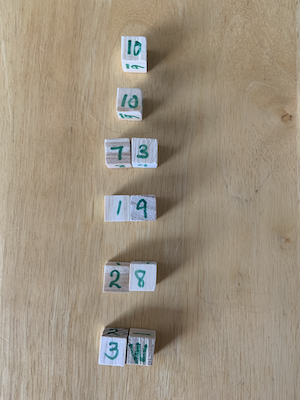




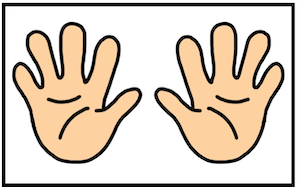






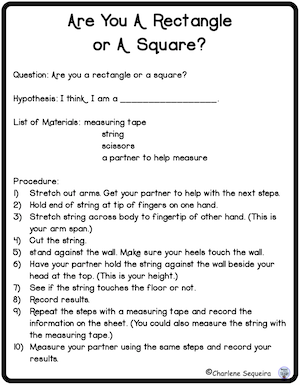


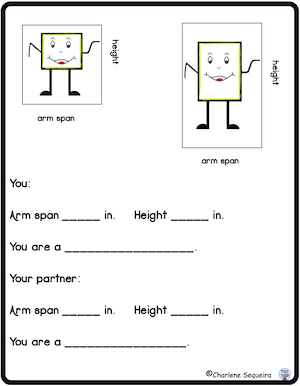









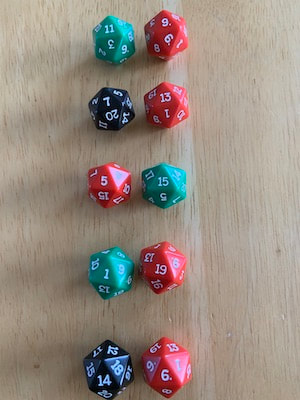

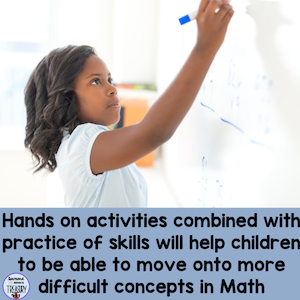
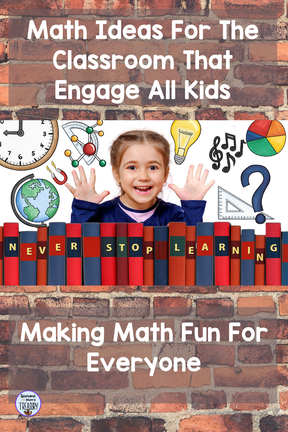

































 RSS Feed
RSS Feed